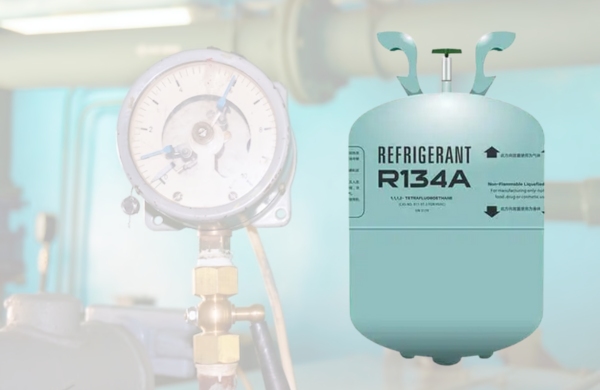
R134a Refrigerant used in many air conditioning and refrigeration systems. A refrigerant chart for R134a typically includes information such as the refrigerant pressure-temperature relationship, superheat and subcooling values, and other relevant data needed to diagnose and service refrigeration systems.
The purpose of a refrigerant chart is to provide technicians with the necessary information to properly charge and diagnose a refrigeration system. It is important to note that refrigerant charts can vary depending on the specific make and model of the system, as well as the operating conditions, so it’s important to consult the appropriate chart for the system you are working on.
R134a is a colorless and odorless gas that does not contain chlorine and is considered to be more environmentally friendly than older refrigerants such as R22.
Benefits of using R134a refrigerant
Environmentally friendly: R134a is considered to be a more environmentally friendly refrigerant than older refrigerants such as R22. It has a low global warming potential (GWP) and does not contain ozone-depleting substances, making it a safer and more sustainable option.
Safe to use: R134a is non-toxic and non-flammable, which makes it a safer alternative to some other refrigerants.
Efficient: R134a is an efficient refrigerant that provides effective cooling performance.
Widely available: R134a is a commonly used refrigerant and is readily available from many suppliers, making it easy to source for use in a variety of systems.
Compatibility with existing systems: R134a is compatible with many existing refrigeration systems, which makes it a convenient replacement for older refrigerants that may be phased out due to environmental concerns.
R13 4a is a reliable and effective refrigerant that offers several benefits in terms of environmental impact, safety, and performance.
Also Read: Sustainable and Stylish: Owala Water Bottle for Eco-Conscious Consumers
R134a Refrigerant Gas Properties
R134a is a relatively stable and predictable refrigerant that is widely used in a variety of air conditioning and refrigeration systems. Its low ODP and relatively low GWP make it a more environmentally friendly option than many older refrigerants, and its non-flammable properties make it a safe choice for use in a range of applications.
Chemical formula: R134a has a chemical formula of CF3CH2F.
Boiling point: R134a has a boiling point of -26.3°C at atmospheric pressure.
Critical temperature: The critical temperature of R134a is 101.1°C.
Ozone depletion potential: R134a has no ozone depletion potential (ODP).
Global warming potential: The global warming potential (GWP) of R134a is 1, which is relatively low compared to some other refrigerants.
Pressure-temperature relationship: The pressure-temperature relationship of R134a is relatively linear, which makes it easy to predict the behavior of the refrigerant in different conditions.
Thermal conductivity: R134a has a thermal conductivity of 0.087 W/m*K at 25°C.
Specific heat capacity: The specific heat capacity of R134a is 1.18 kJ/kg*K at 25°C.
Flammability: R134a is non-flammable under normal conditions.
Also Read: Electronics Recycling: Benefits, Challenges & Solutions
Top alternatives R134a refrigerant
As R134a refrigerant has a relatively high global warming potential (GWP), there is a growing interest in finding alternatives that are more environmentally friendly. Here are some of the most promising alternatives to R134a:
R1234yf: This refrigerant has a very low GWP of 4 and is being widely adopted in the automotive industry as a replacement for R134a. It is compatible with existing automotive air conditioning systems, making it a convenient and cost-effective alternative.
R744 (carbon dioxide): Carbon dioxide is a natural refrigerant that has a very low GWP and is non-toxic. However, it requires higher operating pressures than other refrigerants and may not be suitable for all systems.
R290 (propane): Propane is another natural refrigerant that has a very low GWP and is non-toxic. However, it is flammable and requires careful handling and storage.
R32: This refrigerant has a lower GWP than R410a (which is commonly used in air conditioning systems) and is being increasingly adopted in the HVAC industry. However, it is mildly flammable and requires special handling and storage procedures.
R1234ze: This refrigerant has a GWP of less than 1 and is being used in some industrial refrigeration systems. It is non-flammable and has a similar operating pressure to R134a.
Overall, there are several alternatives to R134a that offer lower environmental impact and improved sustainability. However, it’s important to note that each alternative has its own advantages and disadvantages, and choosing the right refrigerant for a specific system requires careful consideration and expertise.

Leave a Reply